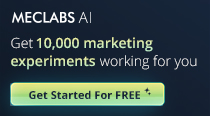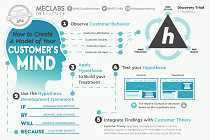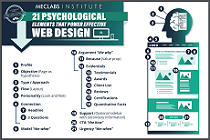February 04, 2003
Case Study
SUMMARY:
If you market business services, you will be inspired by the low-
cost-but-innovative tactics in this Case Study about a UK firm who
pulled out of a death-spiral with really smart marketing.
Yes, these ideas are totally applicable no matter what country you
are in. Our personal favorite: The business card idea. Also
features powerful copywriting tips for your Web site home page.
|
|
CHALLENGE
If you think things have been tough in the US, just
be glad you are not in the UK where market conditions have been
even worse for many business marketers.
Birmingham-based, Cabal Group Ltd helps mid-sized consultancies in
IT, manufacturing, and engineering fields market themselves to
get more clients.
Managing Director Joe Gregory remembers grimly, "We were in the
unfortunate position of trying to sell what we did to other
service providers who were finding it almost impossible to sell
what they did to their clients. Talk about bottom of the food
chain!"
"We went from nine people to four in just a matter of weeks.
This was painful and we felt like we had failed."
Morale among remaining staffers plummeted, and their work suffered, which set off a chain reaction. Cabal's remaining clients
were rapidly becoming unhappy about the level of service, and
more unlikely to refer new clients.
By last year, the situation was make or break. "We needed a new
direction and we needed to move quickly."
When you are feeling a bit panicky about sales, it is nearly
impossibly to switch from a reactionary 'Get a campaign out now!'
to carefully-planned tactics.
The Cabal team knew better, but they still fell into the trap.
Their initial promotional efforts were failures. The ship was
still sinking. Now it was time to get serious.
CAMPAIGN
This time the team did their research first. They
were already pretty close to their clients but they did not assume
that meant true marketplace knowledge.
The team began to ask clients through every means possible:
Personal emails, phone calls, survey questions in Cabal's email
newsletter, and what clients saw as their biggest marketing
challenge. Answers boiled down to one key:
"They wanted to get more by paying less," says Cabal Group
Director Debbie Jenkins.
Cabal Group also learned they had a branding problem. Although
the firm handles all aspects of marketing from Web design to PR,
most clients only thought of them in terms of the particular
tactic they had been initially hired to handle. No amount of
education seemed to budge perceptions.
Therefore, instead of launching a marketing campaign promoting
themselves as the firm who helps you do more marketing with less
money, Cabal decided to launch as an entirely new brand focused
on that.
Instead of just changing company names, the new brand as launched
as a specially-named division of the old company for two reasons.
Firstly current clients would have reassuring continuity.
Secondly new clients would feel safer with a new brand from an
established company with a track record behind it.
Gregory says the new brand's name, LeanMarketing TM was a "happy
accident" that came up during a brainstorming session as a take
off on the term 'Lean Manufacturing' that many of their clients'
CEOs believed in deeply.
With branding decided, it was time to set up mechanisms to get
sales leads and turn them into new accounts:
-> Step 1: Inventing offers to generate qualified leads
The team invented three different offers to draw in leads, and each
was based on the idea of providing enough valuable, educational
material to build trust, without going overboard and turning into
a no-cost consultancy. The three offers were:
o Detox tool kit: The kit is a worksheet that leads prospects
through the first steps of identifying where their marketing
money may be currently wasted, and how to start solving the
problem on their own.
The name is deliberate. A "tool kit" sounds more valuable
than a worksheet.
It is also presented with deliberate value. For example on
the LeanMarketing Web site there is a graphic that makes it
look like a book you could hold in your hands. When
team members offer printed copies of the kit as a giveaway
in real-world meetings (for example, when they speak at
events) instead of handing over a few pieces of stapled
paper, they put the kit in a silver envelope.
Jenkins says, "Silver envelopes look more physically
important than it really is. People will swap their
business cards for it."
o LeanMarketing 111: This is a clever brand name for the old
standby, a one hour no-cost consultation. "People find it
easier to accept if it's got a name, "says Jenkins. "They
feel it's more physical and real. When you're selling
services, everything's so intangible."
To assuage prospects' fears that the meeting would be
nothing more than a sales pitch, all promotional copy
offering LeanMarketing 111 also focuses on tangibles.
Prospects are urged to bring samples of their current
materials to the meeting for immediate evaluation, and
promised they will walk away with several suggestions they
can implement on their own right away without having to hire
LeanMarketing at all.
o Web site visibility analysis: This is a standard but
popular offer in the search engine optimization field which
is one of the services LeanMarketing offers.
Again, they differentiate their offer by not just promising
to reveal how prospect's sites are doing, but also by
promising to hand over a few specific personalized-tips that
prospect can implement right away on their own for results.
Why push prospects to do so much on their own? The Cabal team
felt this gave them a few edges:
a. Prospects were more likely to bite at offers
b. To get specific suggestions, prospects had to share more
information about their businesses than one might with a
sales rep normally, thus beginning a back and forth
relationship and revealing clues about what aspects of their
marketing they definitely needed outside help for.
c. If the prospect was too busy to implement the suggestions,
they often would outsource to the people who made the
suggestions in the first place.
d. If the prospect did implement the suggestions and it worked
for them, they were more likely to turn to LeanMarketing as
their most-trusted partner when they wanted to expand
marketing and could not handle it in-house.
-> Step 2: Getting the word out to prospects online
First Cabal's Gregory bought the domain LeanMarketing.co.uk and
set up an entirely new site for the brand. Unlike the Cabal
Group site which contains lots of info on the Company, this new
site was designed explicitly as a lead generation tool.
It has few pages, all of which are no less than one single click
away from offer lead generation forms.
"With big sites people can get lost in content and forget what
you want them to do. The smaller, the easier. You can focus the
process, knowing where you want to lead people to next," explains
Gregory.
Instead of wasting any space on big logos or slick clip-art,
Gregory put a list of offers running down the left side, and a
sales letter at the right.
His copywriting was inspired by Neuro Linguistic Programming
based on psychological research from California. (Link to info
below.) In short, the research found you need to get people to
agree with you (nod their heads) several times in a row before
you nudge them into taking a specific direction.
The way Gregory uses this data is to copywrite a series of
questions and a few bullet points about his target audience's
paint points that he is sure they'll agree with (Example, "Is
your marketing a waste of time and money?") Then once they are
nodding along with the copy, he suggests a step they can take:
His offer.
He notes that in the past his copy was too focused on his own
business: What he could provide and what he felt were the
problems most prospects had.
This new, more effective copy, speaks in the prospect's voice
stating what the prospect already believes to be true. Then it
presents a solution to their pain.
Gregory designed the registration forms very carefully to make
sure the majority of prospects led to them would actually fill
them out. He minimized the number of required fields, and
completely removed unnecessary fields such as address and phone
number.
"We've tended to find in the UK if you give choice of email and
phone, they'll just fill in email."
He carefully added a clear privacy policy link "We Value Your
Privacy" next to the request for email address to deflate
worries.
Last, but not least, he optimized the site using a combination of
tags, copywriting, and other tactics to get the best-possible
search engine ranking.
Gregory also revamped Cabal's email newsletter dramatically to a
leaner style to reflect the new brand and focus. (Link to
samples of old and new below.)
The old newsletter was a longish (three-page) text-only
newsletter with several articles per issue. The new one is much
shorter, with only fairly short one article per issue. Jenkins
says, "It only takes three minutes to read."
Gregory wanted to launch the new newsletter in HTML because he is able to use graphics, such as big bold headlines, to make it
even easier to read. However, he worried this might annoy some
clients, so every single name on Cabal's list was personally
contacted with a question: Did they mind HTML?
Anyone who did not answer would get a text-only version of the new
newsletter.
-> Step 3: Getting the word out to prospects offline
Although everyone knows the best prospects come from personal
networking and client referrals, most marketers are too busy to
actually get around to focusing on those tactics. To get around
this problem, each member of Cabal's team formally scheduled a
time slot in each day's work for networking.
Now it is an acknowledged part of the job during regular business
hours, rather than an afterthought.
a. Getting Referrals by Giving Them:
Instead of asking clients to give them referrals, Cabal Group
asks clients to hand over a stack of business cards (at least
20) so Cabal team members can recommend clients to other
people they meet.
Jenkins explains, "I pop them an email, I spoke to Joe so-and-
so and he might be getting in touch with you. Once they've
had one referral, they feel an obligation to give referrals
back and they get into the habit of doing it."
If two clients are competitors, Jenkins will hand both cards
to any prospects she meets.
In addition to handing out clients' cards, she surfs a range
of email discussion groups each morning looking for chances to
refer business to her clients. Again, once they have seen it in
action, clients are often more than willing to refer Cabal
when appropriate in the discussion groups in return, which
removes the shameless self-promotion stigma from Jenkin's
back.
b. Networking at business functions:
Whenever possible, Cabal team members try to attend in-person
business networking events at their clients' sides. That way
they can mutually introduce each other to respective
prospects.
Instead of relying on same-old/same-old business cards, the
team invent new cards every six months and test them for
impact. The goal is to get people to really notice your card
when you hand it over, instead of just slipping it immediately
into their purse or pocket.
c. Speaking gigs:
The team have tested acting as guest trainers at formal paid
training events, and no-cost events. Some of the events are
organized by the British Government, which meant there was
plenty of red tape involved in being approved as a trainer.
Jenkins says it was worth it. (Links below.)
-> Step 4: Follow-up tactics to turn leads into accounts
Once a prospect accepts a LeanMarketing offer, the team wait
about a week to follow-up via email.
"On that first email you don't want to ask them to do
everything," says Jenkins. "Initially you just want them to keep
in touch. That's the goal." She will ask the prospect how
their use of the advice they got has been going, and if they would
like to get LeanMarketing's email newsletter.
If they have tried the advice, you have an opening to talk some
more because they may have questions or results to share. If
they have not gotten to it yet, you have an opening to offer a
half-days' worth of paid consulting just to get them started.
The goal is to transition these leads into six-month contract
clients worth 25,000-75,000 pounds for the period. Then to
upsell based on established needs for a year's contract after
that.
RESULTS
Cabal's profits have increased by almost 40% in six
months and they have a record high income.
Jenkins says aside from client referrals, attendees at paid
educational events convert the best. About 20% of the prospects
a Cabal Group team member meets in person convert to active
prospects who have accepted one of the offers. About 80% of the
people who accept LeanMarketing 111 consultation turn into paying
clients.
Since the new site launched in October, the Company's overall
traffic (from both sites combined) has risen dramatically, with
more than 1% of visitors converting to offer-takers. Exact
numbers:
Visitors Detox Kit Downloads
Sept 280 0 0%
Oct 6893 104 1.5%
Nov 7627 120 1.6%
Dec 7834 89 1.1%
Jan 11033 146 1.3%
Since the new shorter email newsletter launched in Oct, which the
majority of readers receive in HTML, new number of new
subscribers from pass-alongs has more than doubled. Exact
numbers:
New subscribes to email newsletter
Sept 67 (old longer text-version)
Oct 156 (new shorter HTML version launches)
Nov 189
Dec 132
Jan 201
Jenkins notes that the business cards with headshots of Cabal
staff have been the most effective at networking events, closely
followed by plastic cards. Least effective were any designs that
looked or felt to the touch like traditional cards.
LINKS:
Samples of old-style and revamped email newsletter:
http://www.marketingsherpa.com/cabal/ad.html
Cabal Group Sites:
http://www.leanmarketing.co.uk
http://www.cabalgroup.com
Neuro Linguistic Programming Info Site:
http://www.nlpu.com
Online reference for UK businesses funded by the government:
http://www.ukonlineforbusiness.gov.uk
Government-funded project helps small-medium-sized businesses
gain up to 50% of funding for marketing projects with approved
consultants http://www.businesslink.org
A few UK networking resources Jenkins recommends:
http://www.ecademy.com
http://www.wimhoe.com
http://www.birminghamebusinessclub.co.uk/
http://www.heartspeakers.org.uk/ - toastmasters club









